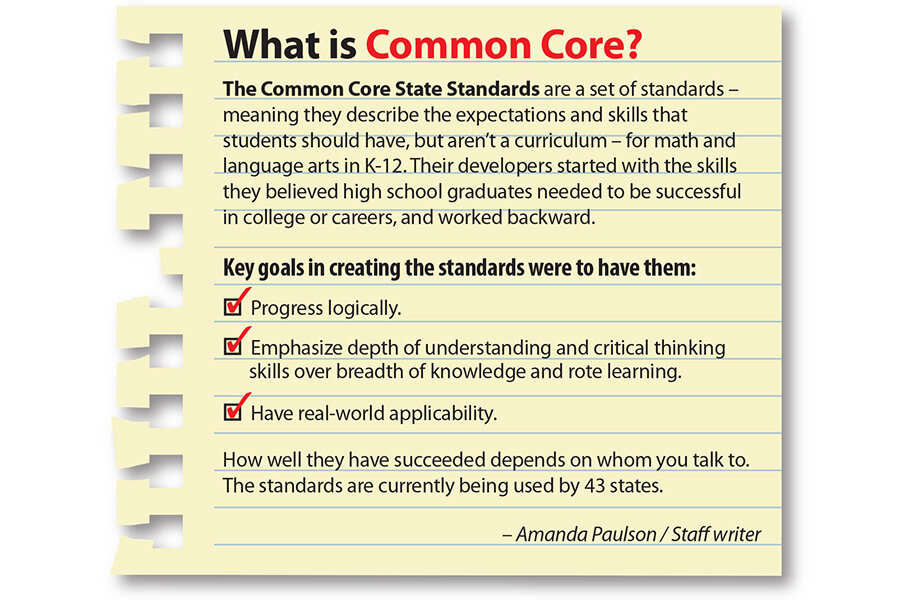Common Core faces another quarrel – over new tests
Loading...
| Saugus, Mass.
In a red-brick school administration building here, parents and community members are listening to a panel discussion about the new Common Core-aligned test coming this year – and, in most cases, venting disapproval.
The new test, Partnership for Assessment of Readiness for College and Careers, “is hurting children. It’s too stressful,” says Cynthia Curcio, an interior designer whose grandson took part in the PARCC field test this year. In Massachusetts, districts have the ability to go with the new test or stick with the old, and the next day, the Saugus School Committee voted unanimously to reject PARCC.
While most of the rhetoric has been around the Common Core standards themselves, both advocates and opponents of the standards agree that the new tests – which debut this school year – are just as important.
Originally, all the Common Core states signed on to one of two testing consortia, PARCC or Smarter Balanced, both of which promised assessments that go beyond multiple choice. The idea was not only a new generation of better tests but also common tests, so that students’ learning could be compared across state lines.
But an Education Week survey this spring showed that just 27 states were planning to use either PARCC or Smarter Balanced, with the rest either using other assessments or remaining undecided.
“The idea was to have something that relatively easily would make it seamless to compare student performance” across state lines, says Frederick Hess, director of education policy studies at the American Enterprise Institute. “That’s already gone.... Both consortia combined will end up with about 1 out of 3 kids.”
Opponents of Common Core have been harsh in their criticism of the assessments, with many saying they are too hard and, especially for younger children, too long.
But advocates say the tests will do a much better job than previous generations of exams, and field tests this year went remarkably smoothly.
Teachers have seemed pleased, says Jacqueline King, a Smarter Balanced spokeswoman: “We heard teachers say, ‘I won’t have to drill and kill for this. If I’m teaching to the standards every day, the test will flow from that.’ ”







